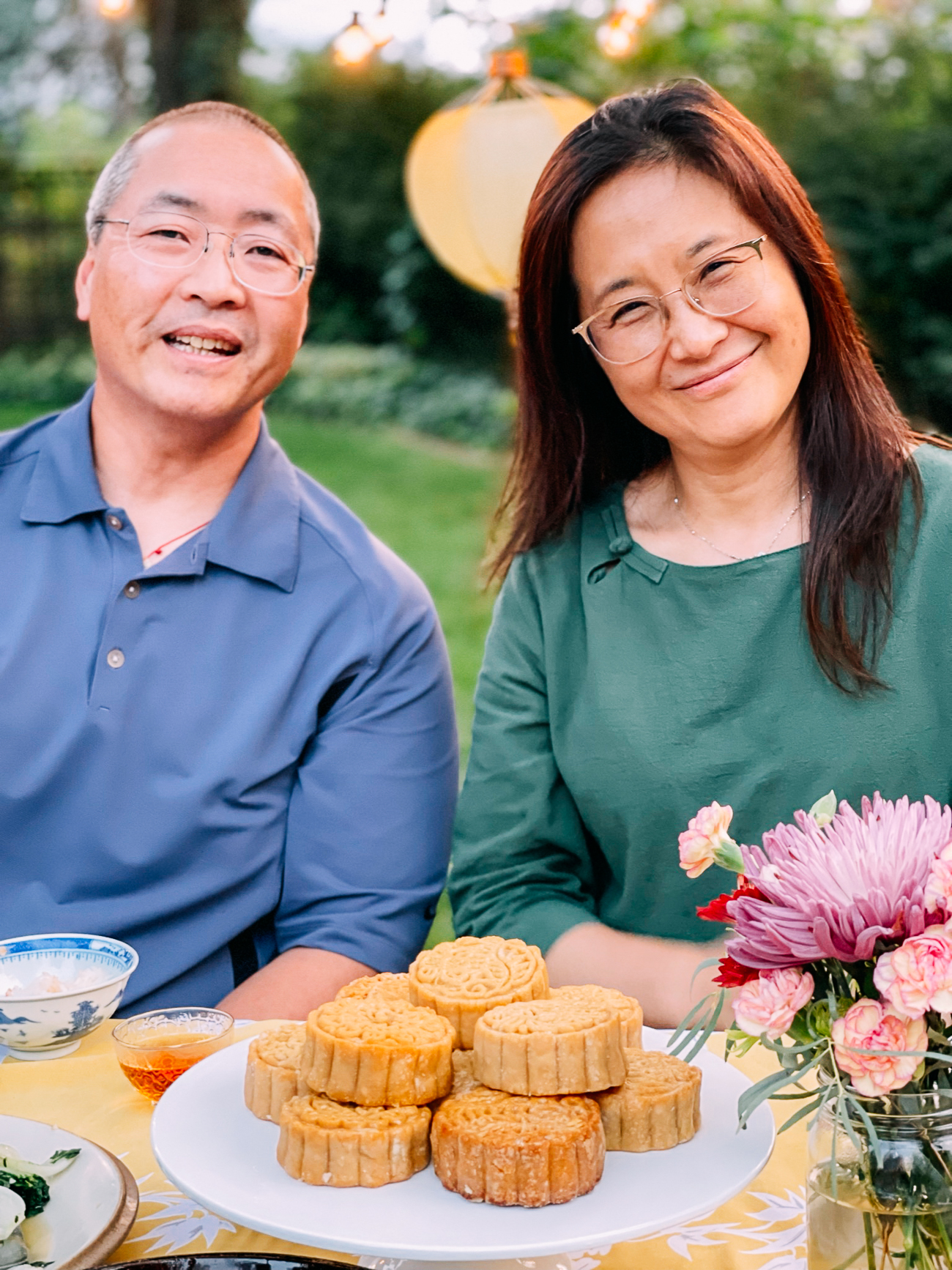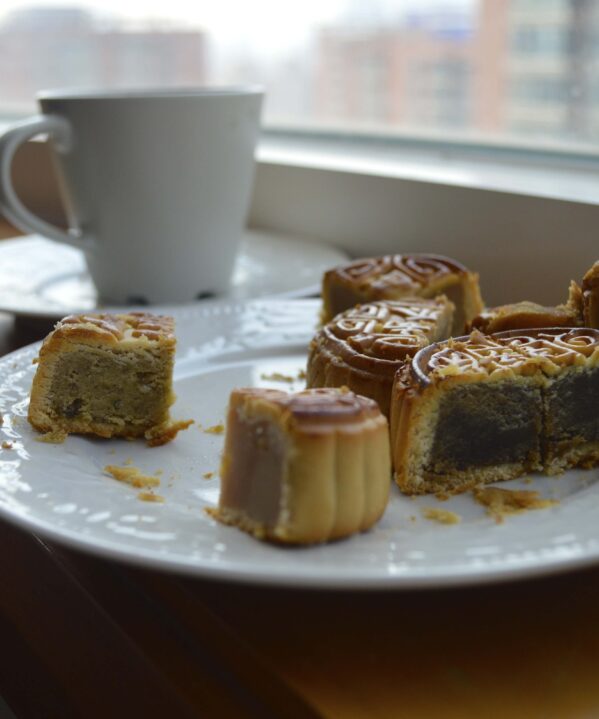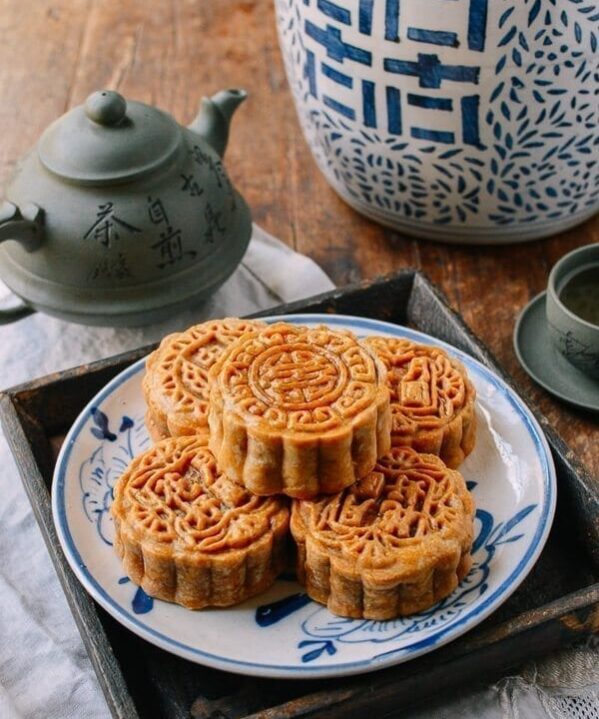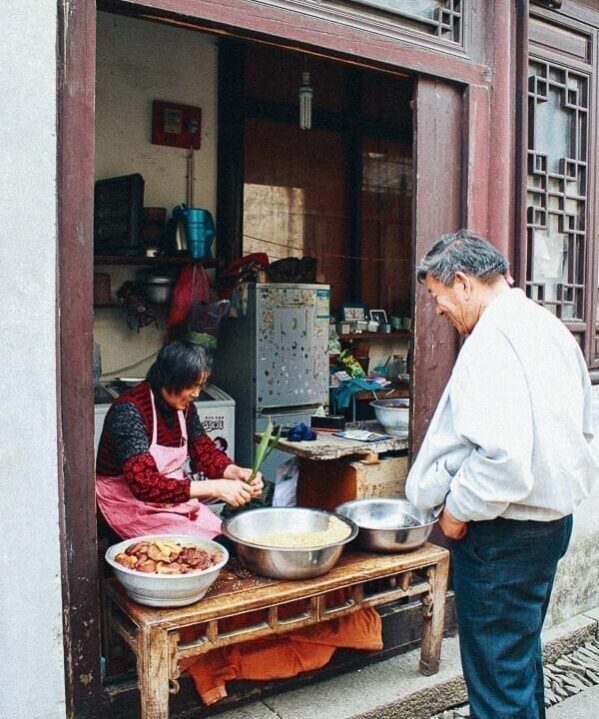The Mid-Autumn Festival is the second most important Chinese holiday of the year (after Lunar New Year, also known as the Spring Festival). It’s a time to get together with family, eat, worship the moon, and celebrate the fall harvest. In this post, we’ll talk about how to celebrate Mid-Autumn Festival with friends and family, and all the traditions associated with the holiday.
Note: This post was originally published on September 19, 2021. We have since updated it with additional information! Enjoy!
When is the Mid-Autumn Festival?
The Mid-Autumn Festival takes place at the same time as the Harvest Moon. This is the full moon that occurs closest to the autumnal equinox (beginning of fall) each year.
The Chinese holiday follows the Chinese lunisolar calendar rather than our common Gregorian calendar. It occurs on the 15th day of the 8th month. The eighth lunar month is in the middle of autumn, which is why it’s called 中秋节 (zhōngqiū jié), or the “Mid-Autumn Festival.”
This is when the moon is at its brightest and biggest according to the Chinese calendar, and it coincides with fall and the harvest season!
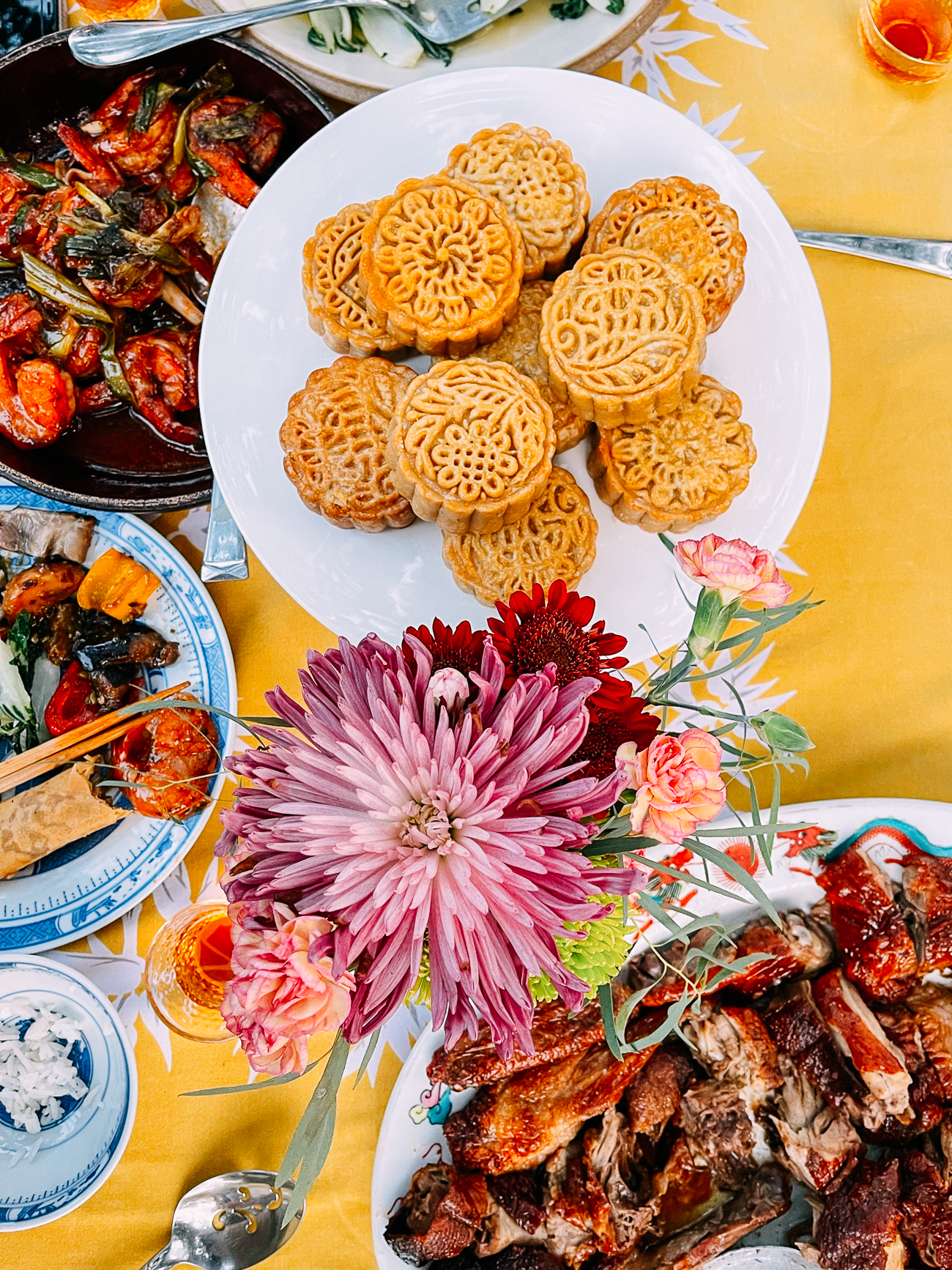
WHEN IS THE MID-AUTUMN FESTIVAL THIS YEAR?
This year, 2024, the Mid-Autumn Festival falls on September 17.
Get ready for it by reading more about traditions and foods below!
What Is the Mid-Autumn Festival?
Also sometimes referred to in English as the Moon Festival or Mooncake Festival, The Mid-Autumn Festival stretches back 3,000 years. It a Chinese holiday that involves worshipping the moon as a symbol of rejuvenation and a good harvest. Today, the holiday is all about family togetherness.

Family and friends gather together, enjoy delicious food, and sit outside to admire the full moon.
Because of the symbolism around rejuvenation, some folks wish for children and grandchildren around the time of the Mid-Autumn Festival as well!
How Do Other Asian Countries Celebrate Autumn?
Other Asian countries have similar autumn holidays celebrated on the same day as the Chinese Mid-Autumn Festival or around the same time.
- Korea – Chuseok (Autumn Eve)
- Vietnam – Tết Trung Thu (Mid-Autumn Tet AKA The Children’s Festival)
- Japan – Tsukimi (Moon Viewing)
- Singapore, Malaysia, and Indonesia: The Lantern Festival is the common name for the Mid-Autumn Festival
- Cambodia – Bon Om Touk (The Water and Moon Festival) takes place in November
How Do You Celebrate the Mid-Autumn Festival?
Going home to see family is a must. To not go home would be about as egregious as not making it home for Thanksgiving here in the U.S.!
We try to avoid scheduling work responsibilities or even vacations during the Mid-Autumn Festival, as the best place to celebrate is at home.
Colorful lanterns have become a popular sign of the Mid-Autumn Festival, creating a fun and festive atmosphere and lighting the path to good things to come.
Unlike during Lunar New Year, they can come in a range of colors, rather than just red and gold. Lanterns can even be made out of pomelos or pumpkins and gourds (similar to a Halloween jack-o-lantern), but that’s less common these days.
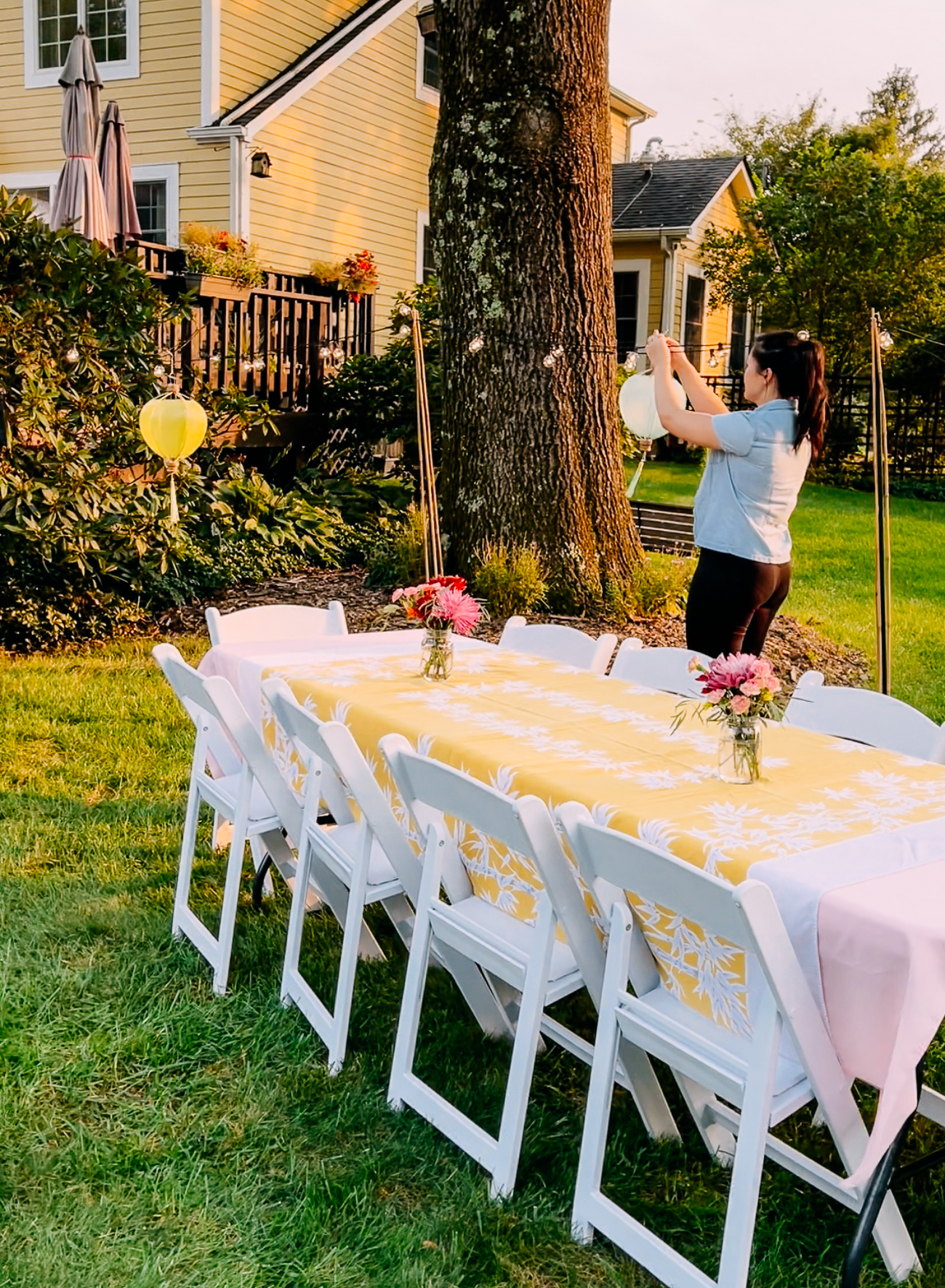
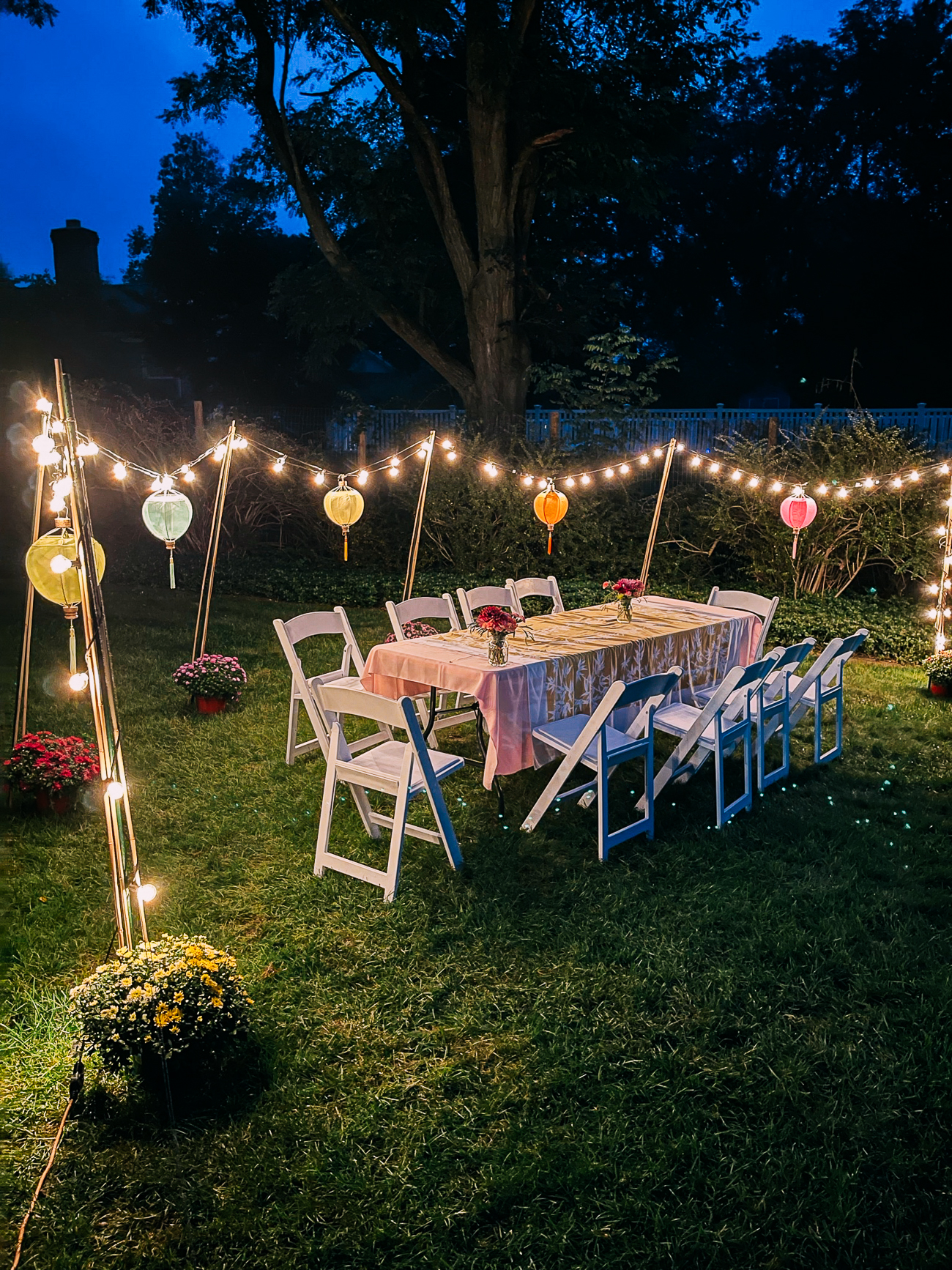
The biggest food tradition of the festival is mooncakes! The round shape harkens to the moon. Families give and receive them, and for the ambitious—make them from scratch!
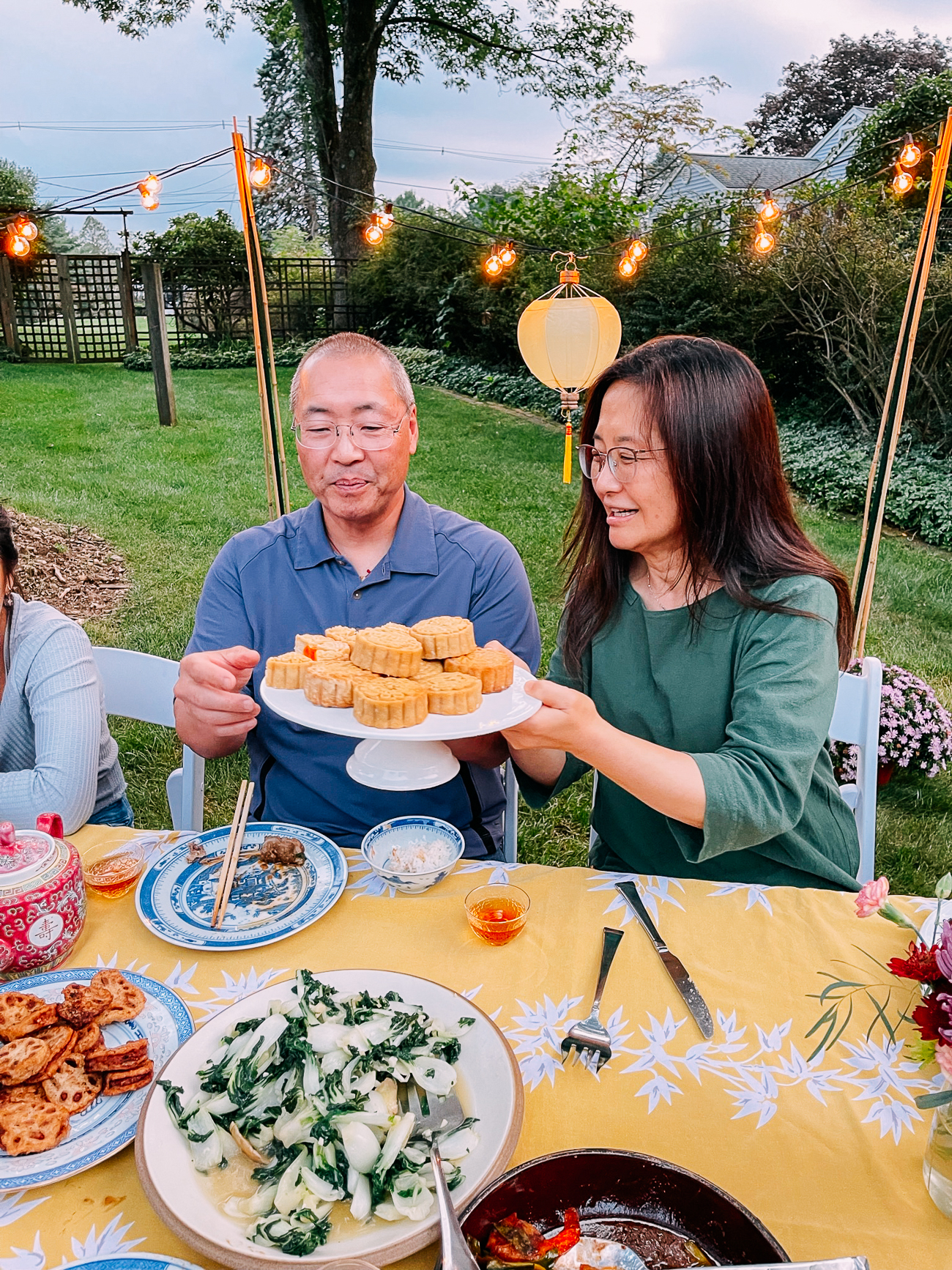
Mooncakes are a special and decadent gift this time of year, and all the stores and restaurants in China go all out with their own mooncakes, wrapped in beautiful boxes and colorful tins for gift-giving. If you’re going to someone’s house for the Mid-Autumn Festival, the best gift is a box of mooncakes!
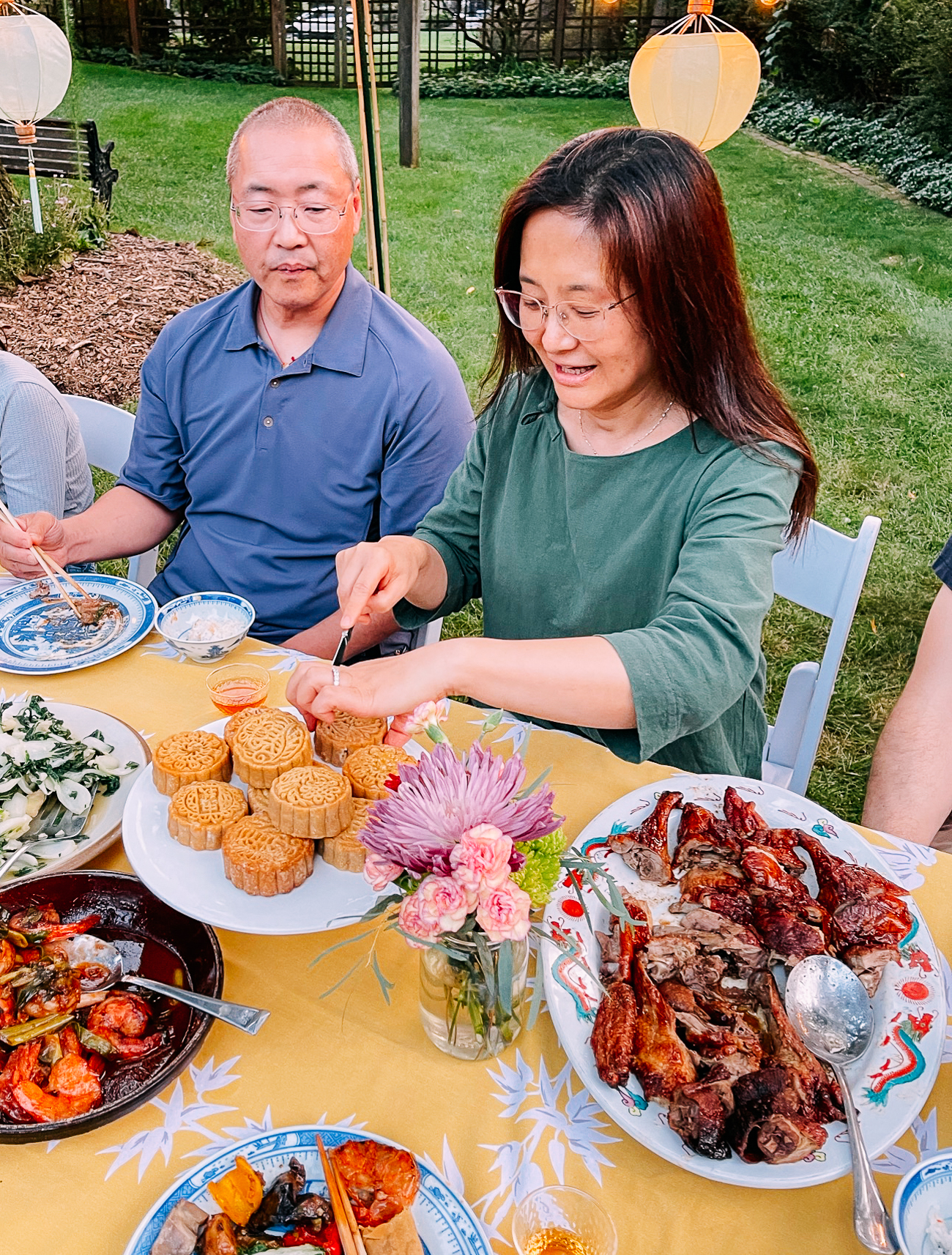
Having a dinner outside under the moonlight to look at the full harvest moon is another custom. With the moon at its biggest and brightest, it’s a shame not to spend some time looking at it while you enjoy some mooncakes and tea.
Check out the spread and table we put out under the stars to show how you can have a backyard Mid-Autumn celebration:
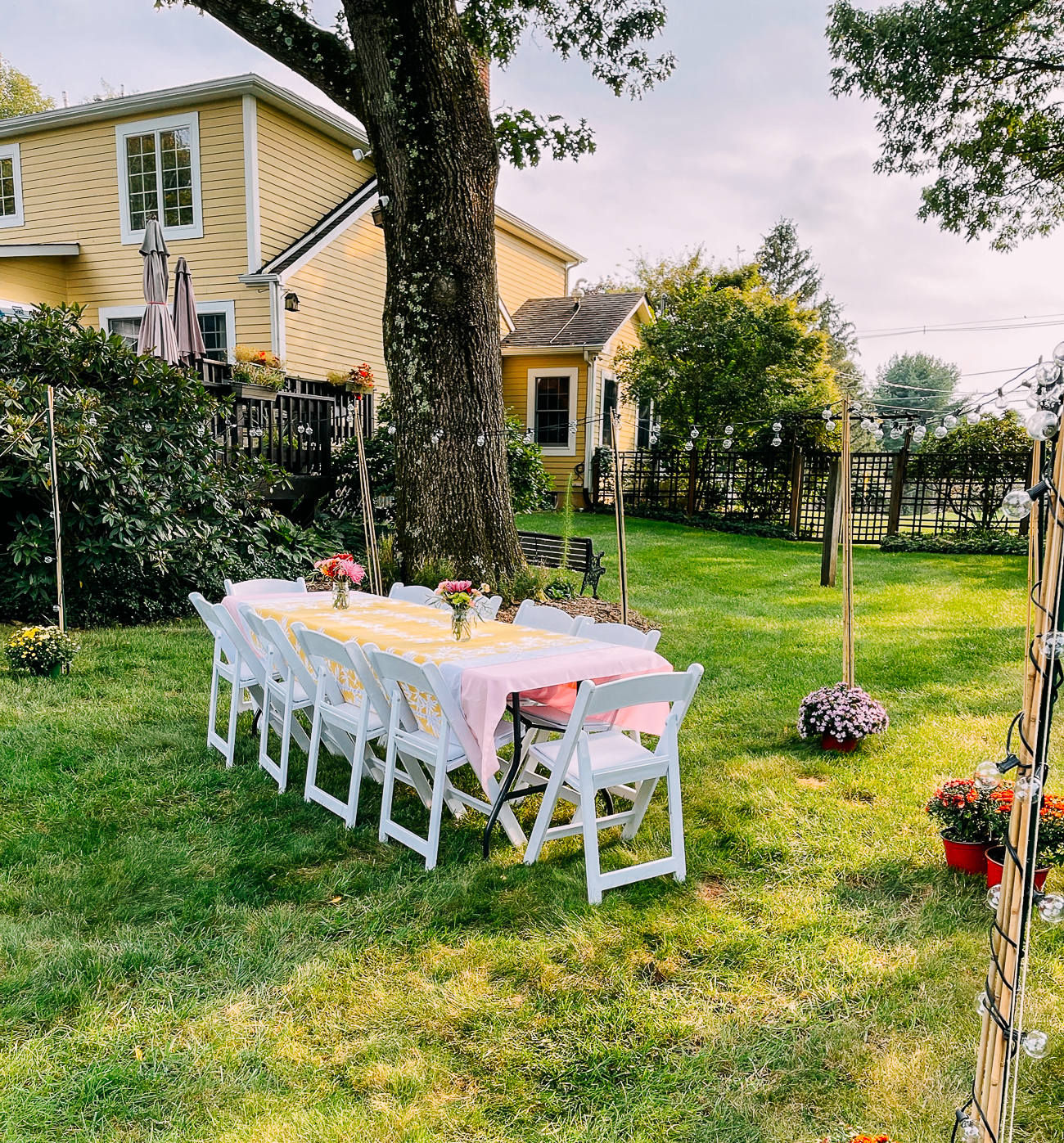
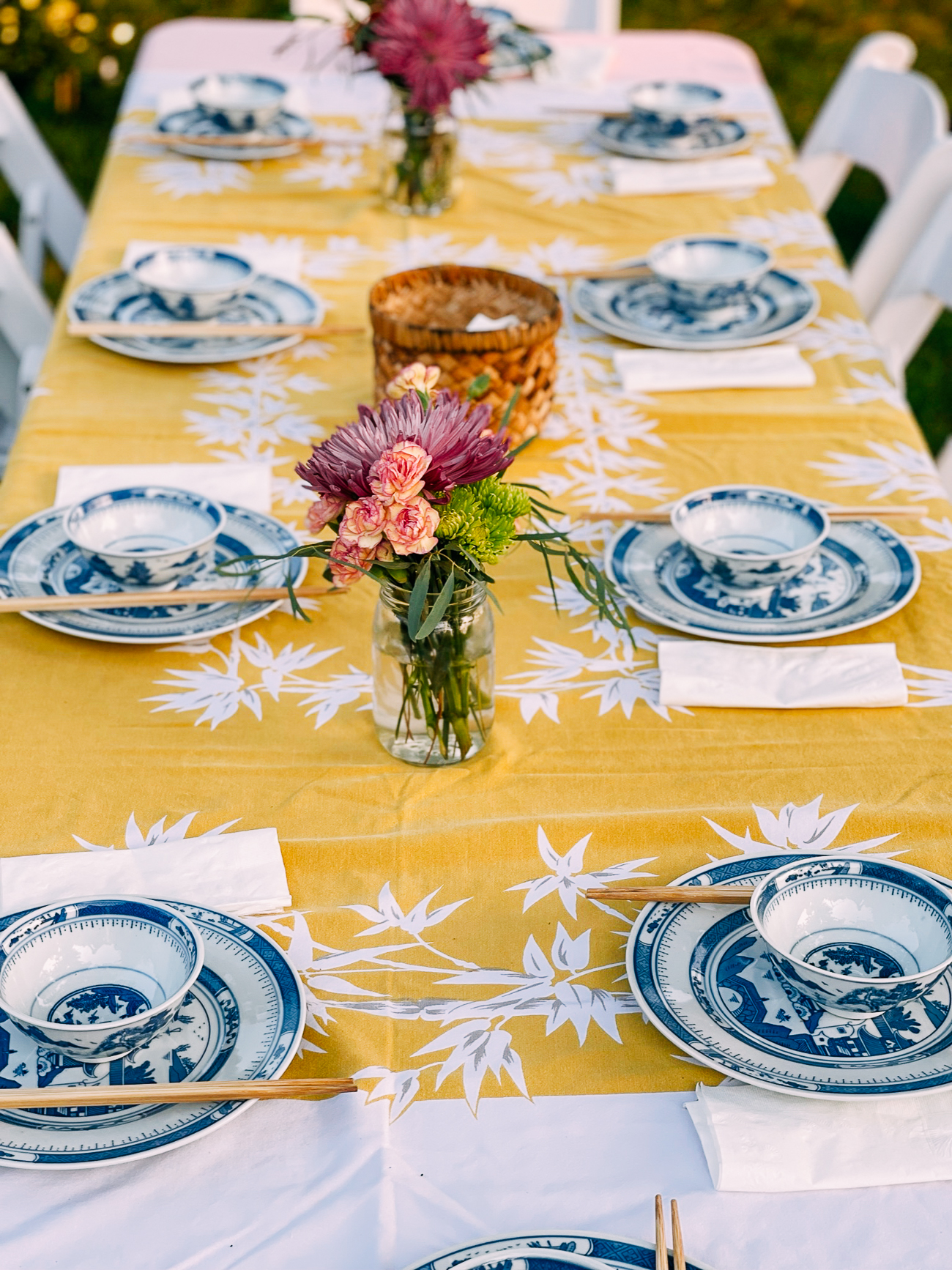
We put stakes out on the lawn so we could hang string lights, with plenty of colorful lanterns (these beautiful silk ones are from Wing on Wo). We also bought pots of colorful chrysanthemum flowers and placed them around our dinner table and in vases.
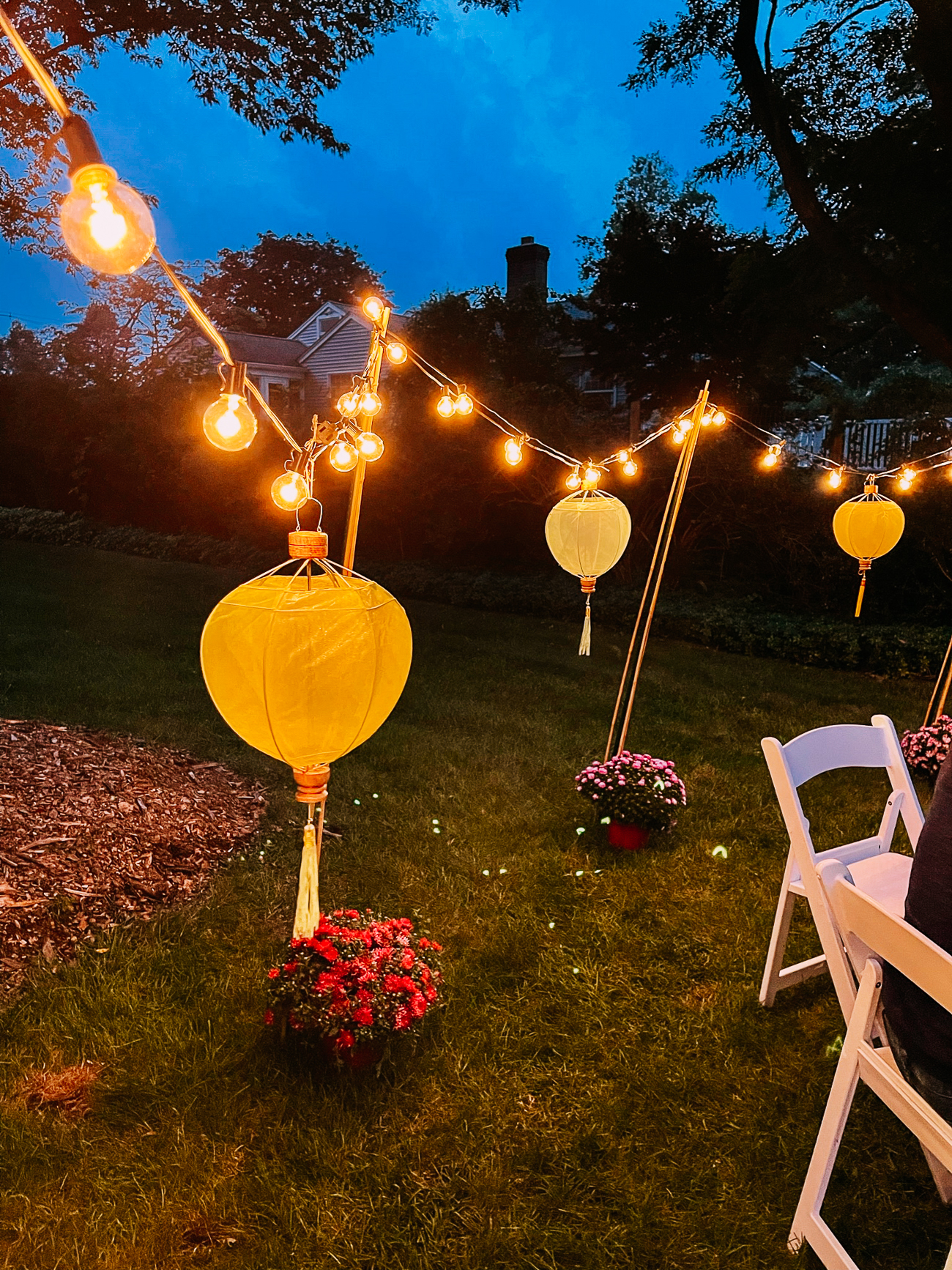
With some of our cousins attending, we couldn’t have had a better time, and we were also treated to some lovely crisp pre-fall weather!
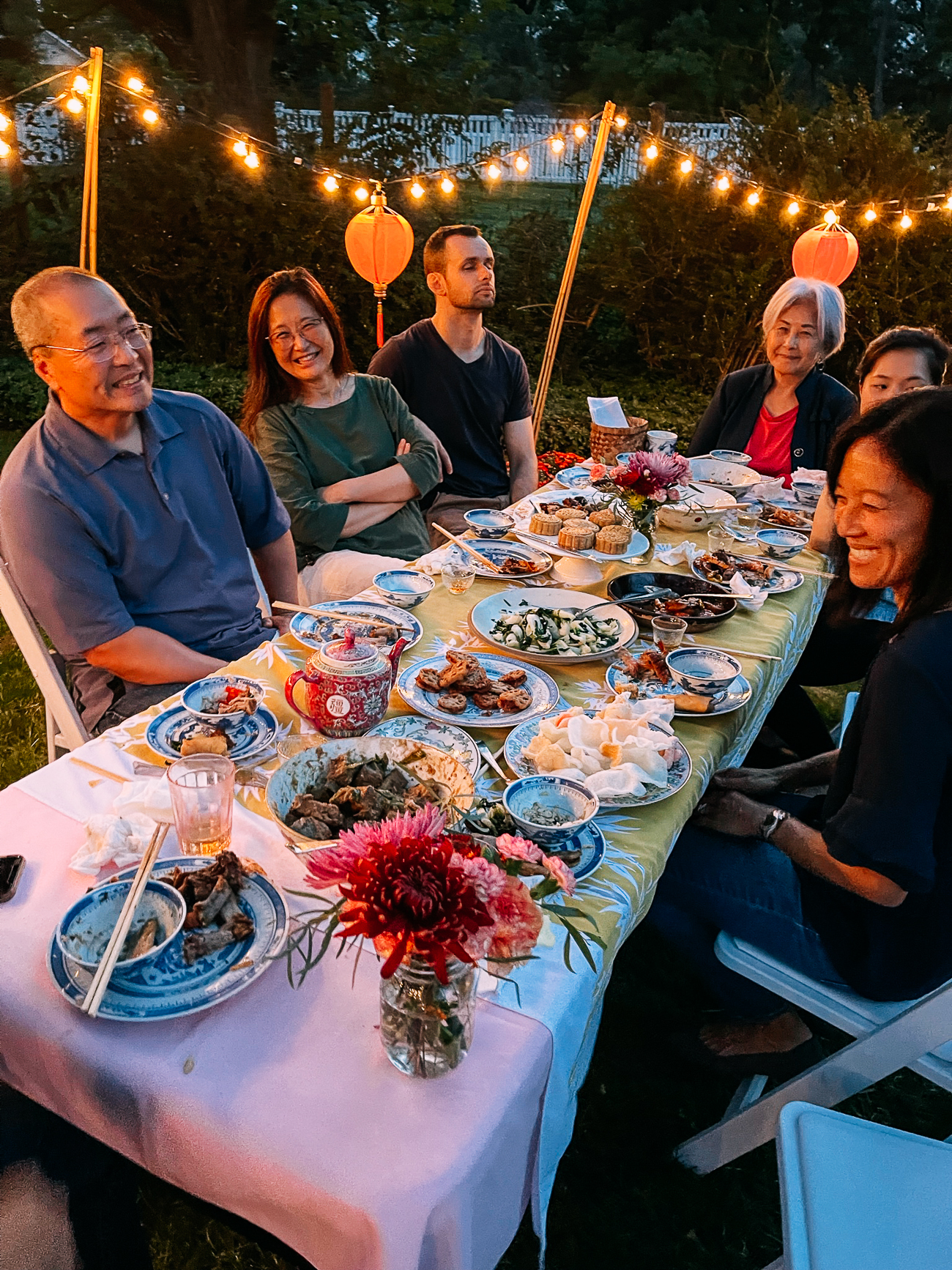
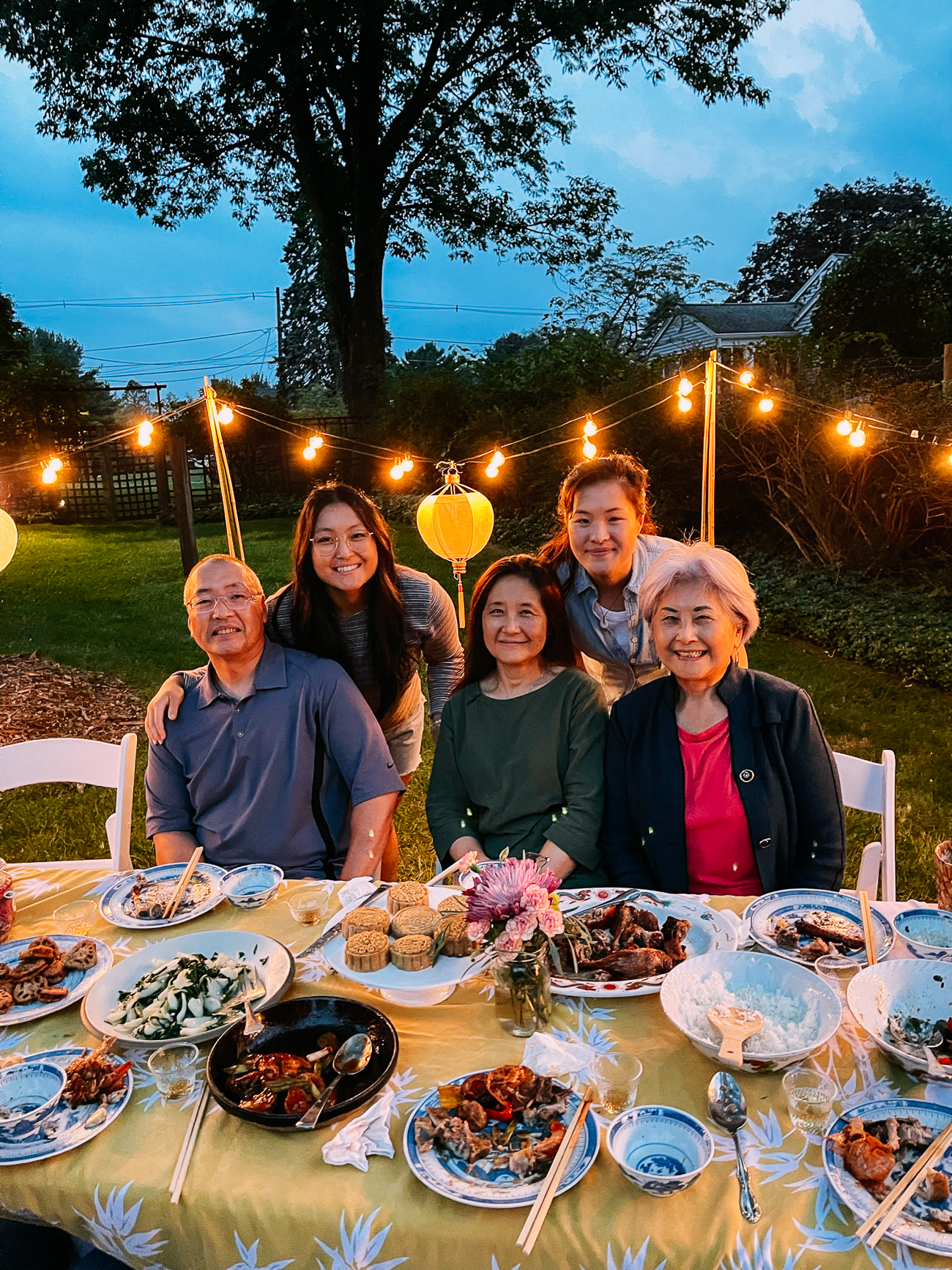
Mid-Autumn Festival Traditions: A Summary
Okay, let’s quickly summarize the top Mid-Autumn Festival traditions!
- Re-uniting with Family: This is perhaps the most important aspect of the holiday. It is a time for families to come together. People often travel long distances to visit their loved ones and celebrate.
- Eating Mooncakes: Mooncakes are perhaps the most well-known aspect of the festival. They are round pastries filled with various ingredients, such as lotus seed paste, red bean paste, and salted duck egg yolk. They can also be savory! The round shape of the mooncake symbolizes the full moon, family unity, and completeness.
- Hanging and Viewing Lanterns: Creating beautiful lantern displays with lanterns of all shapes, sizes and colors is another Mid-Autumn Festival tradition. These lanterns may also have fun riddles hanging from them!
- Performing or Watching Lion/Dragon Dances: Lion and dragon dances aren’t just for Chinese new year. With their drums, gongs, and cymbals, they can bring good luck and ward off evil during the Mid-Autumn Festival too.
- Worshipping or Gazing at the Moon: Worshipping the moon is a central tradition of the festival. The full moon is seen as a symbol of unity, harmony, and prosperity. You can simply gaze at the moon and gather with loved ones to admire its beauty while enjoying candies, nuts, and other snacks outdoors.
- Drinking Osmanthus Wine: Osmanthus wine is a fragrant and sweet wine made from osmanthus flowers. (If wine isn’t your thing, see our Osmanthus Cake!) It is often drunk during the Mid-Autumn Festival because the osmanthus flower is associated with the moon.
- Eating Pomelos: Pomelos are large citrus fruits (think…the size of a volleyball) that are popular during the Mid-Autumn Festival. They taste similar to grapefruit, but are much less bitter. They are often decorated with red paper and given as gifts to friends and family, along with mooncakes.
- Telling Stories: The Mid-Autumn Festival is associated with many legends and myths. One popular story tells of Chang’e, a beautiful goddess who was banished to the moon as punishment for stealing an elixir of immortality. Every year on the Festival, people look up at the moon and offer sacrifices to Chang’e, hoping that she will return to Earth.
What to Eat on the Mid-Autumn Festival
Now, onto what most of you have been waiting for—dinner!
We have another post about 10 Traditional Mid-Autumn Festival Foods, like duck, crab, taro, lotus roots, mooncakes, and pears, but here’s what we ended up making for our Mid-Autumn festival feast!
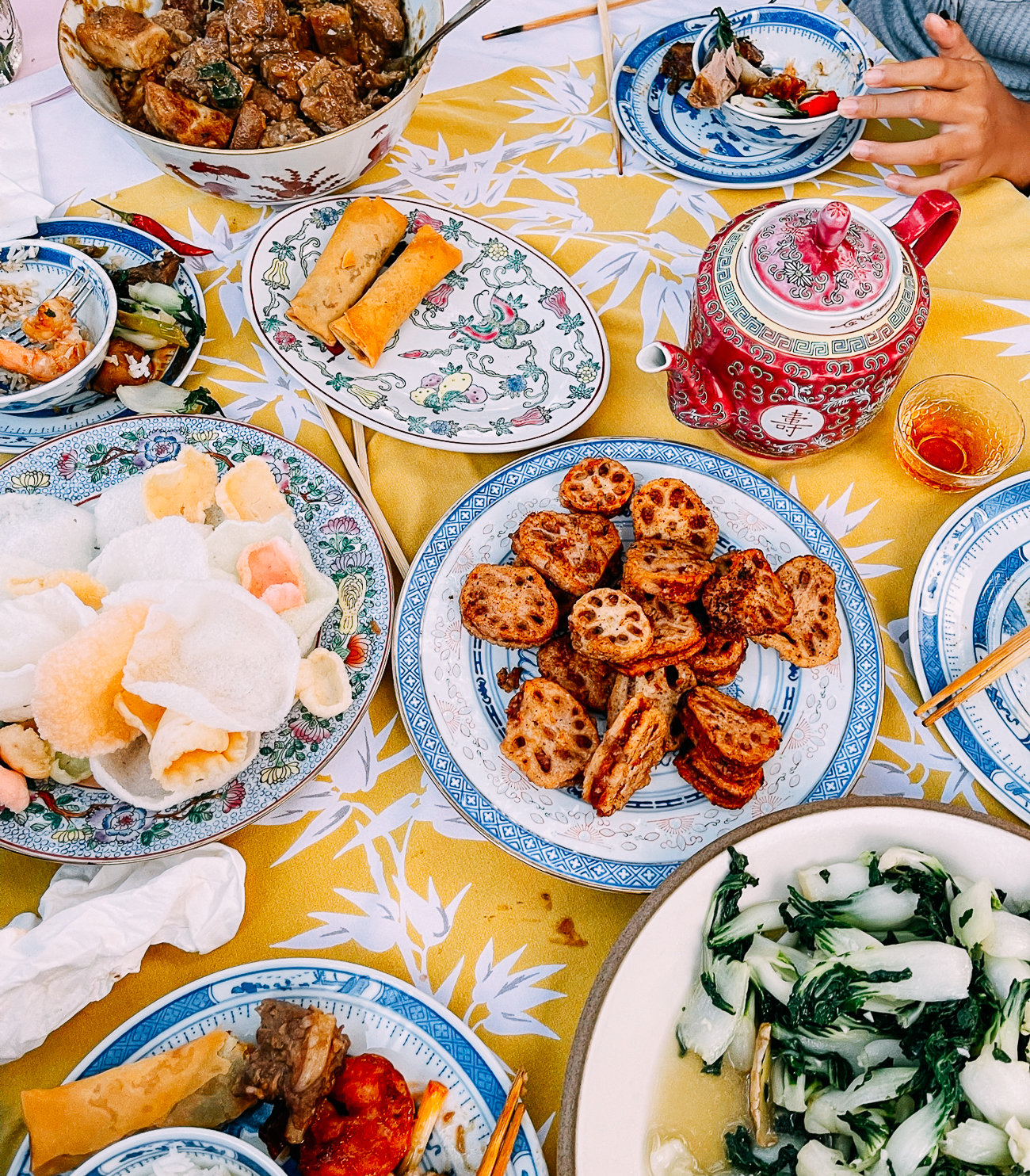
Roasted Braised Duck
Duck is said to be a nutritious food ahead of the chill and dry weather of fall and winter, making it a traditional dinner item this time of year. If you’re vegan, you can have a symbolic Chinese Vegetarian Duck (素鸭).
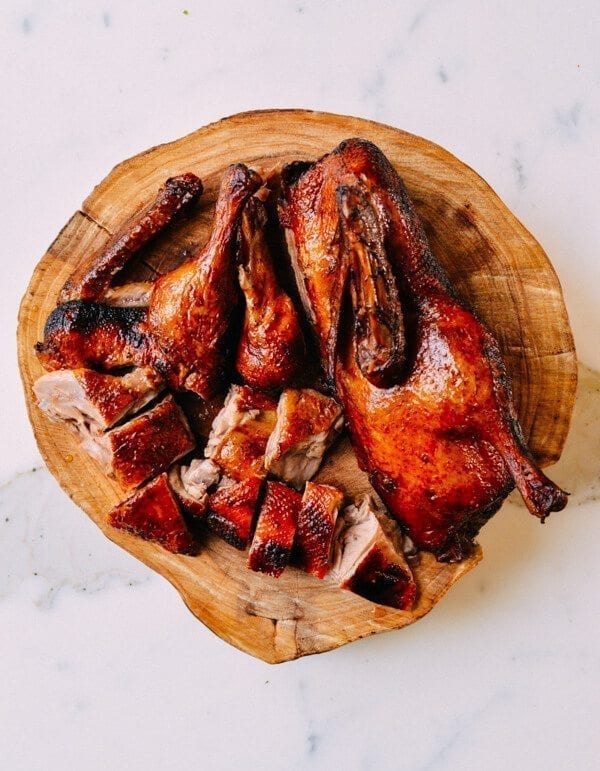
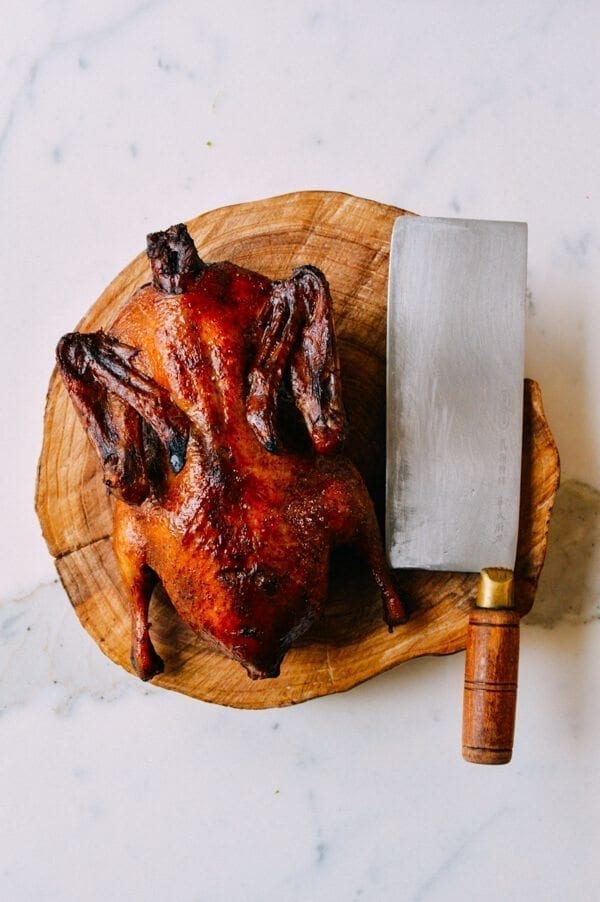
Braised Pork Ribs and Taro Stew
“Taro” in a Southern Chinese dialect sounds like “the coming of good fortune” making it a festive dish for the holiday.
This stew is one of our favorite sleeper recipes on the blog. It’s not the most popular by any means, but the buttery taro is truly a treat. Shallow-frying it before stewing it with the ribs gives it the most incredible flavor. Some of us think it’s even better than the ribs themselves!

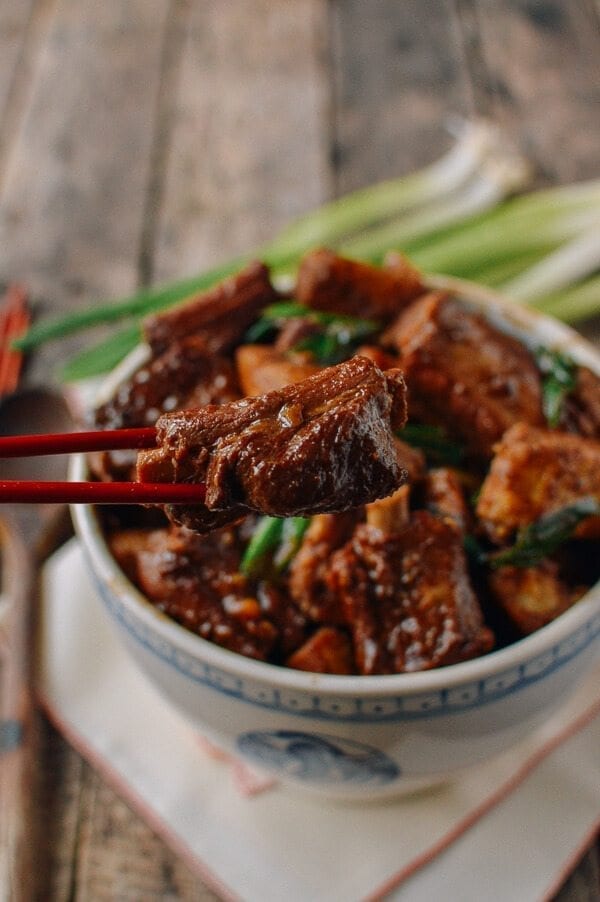
Crispy Stuffed Lotus Roots
Lotus root is chock full of auspicious symbolism in its name, shape, and texture. Firstly, its Chinese name, 莲藕, means “togetherness” (连, lián) and a “pair” (偶, ǒu).
One of our favorite lotus root dishes is this stuffed version made with a tasty pork filling. The whole thing is deep fried to crispy goodness. It’s a great option for kids! Our youngest cousins gobbled these and declared them their favorite dish.
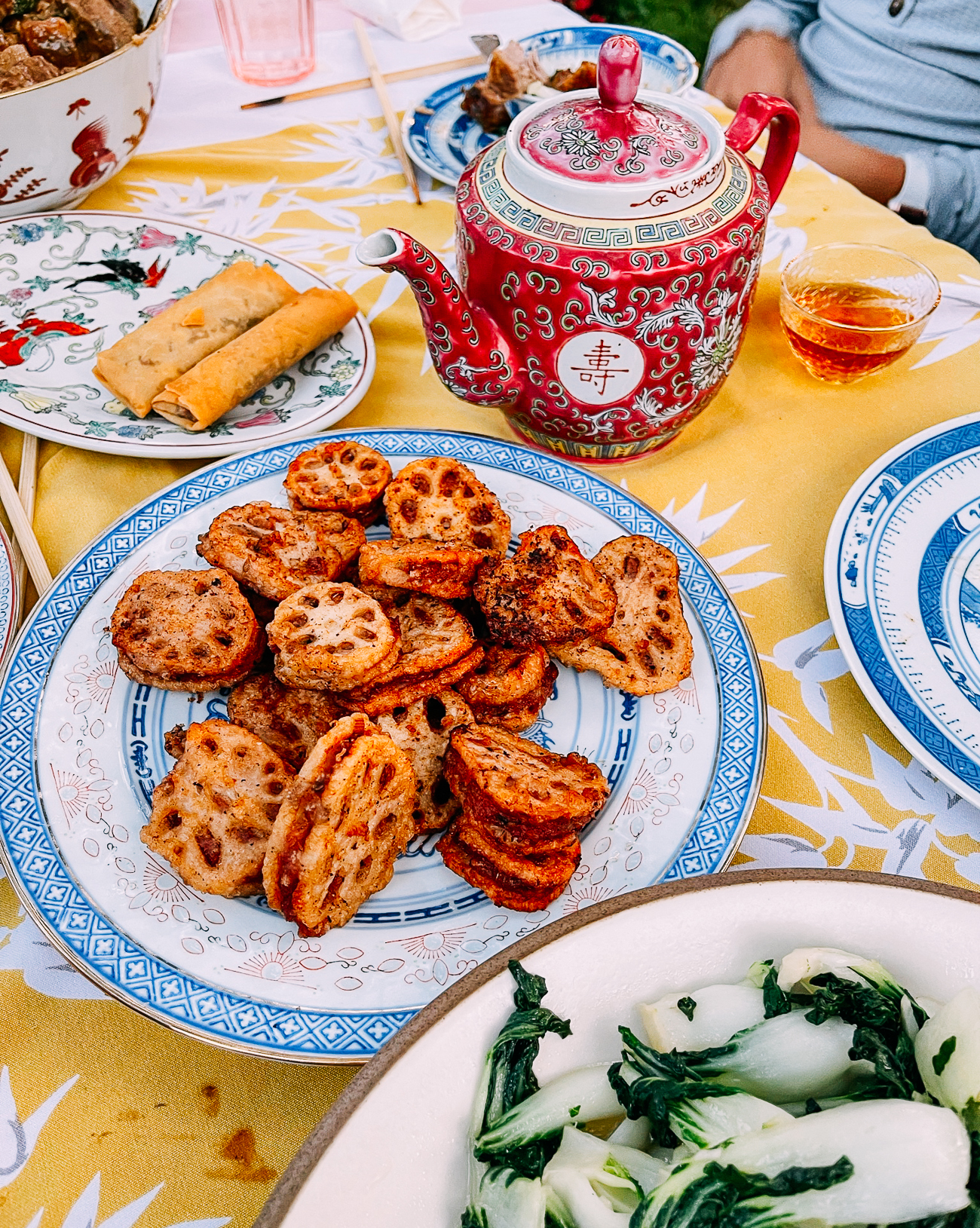
Ketchup Shrimp Stir-Fry
In lieu of the more traditional crab, which tastes the best in the fall, we opted for a family favorite, Bill’s Mother’s Ketchup Shrimp. It never fails to please a crowd!
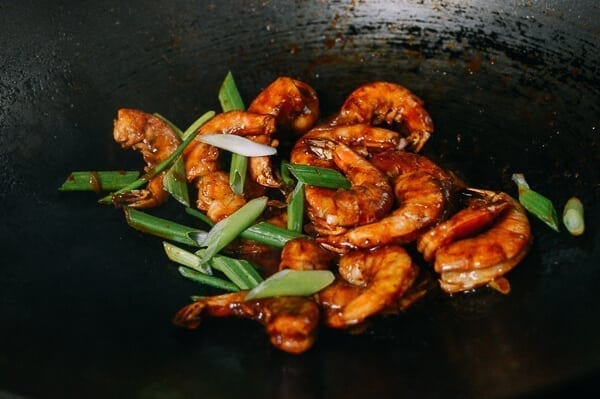
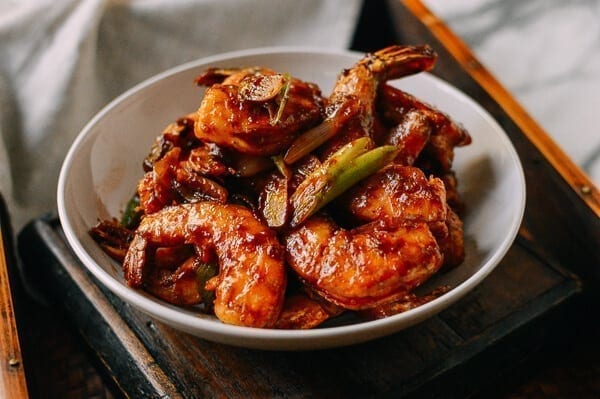
Di San Xian Stir-Fry
This stir-fry of eggplant, peppers, and potatoes was perfect to celebrate the harvest, as our garden has been chock full of all sorts of peppers and long dark purple eggplants this year!
It’s also great for vegetarians and vegans! Along with a leafy bok choy stir-fry, we definitely had our fill of vegetables.
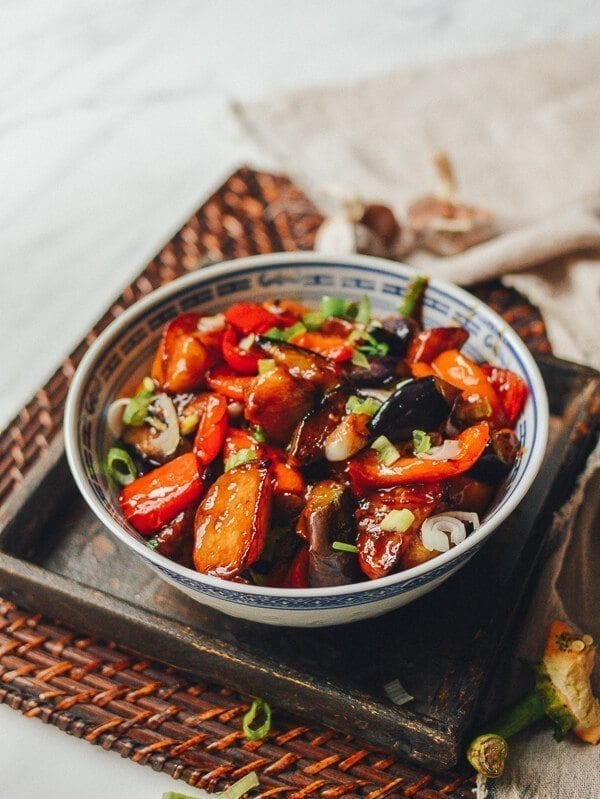
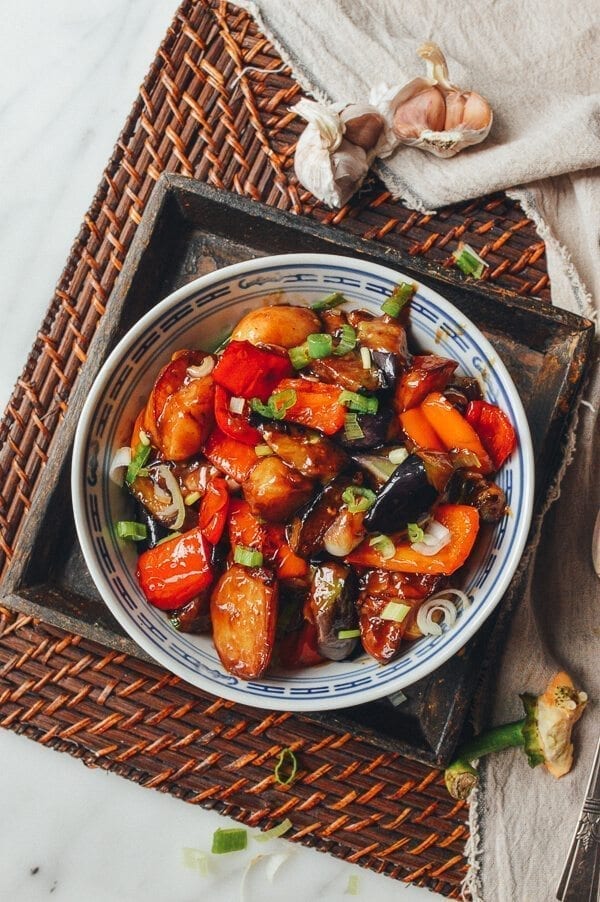
Last But Never Least: Mooncakes
We had to save the best for last! Mooncakes are the beloved tradition of the Mid-Autumn Festival.
They come in all sorts of shapes, sizes, flavor combinations, and textures. Most people are familiar with the golden exterior of a classic mooncake, but there are snow skin mochi mooncakes, savory flaky pastry mooncakes, and even green mung bean mooncakes.
They can be pricey, however, with some mooncakes clocking in at up to $20 each ($80 for a box of four). All the more reason to make your own.
There’s no shortage of creativity with mooncakes, especially these days with more ingredients and cooking innovations. Here are our favorite recipes!
Fair warning, they are pretty high in calories. Most Chinese people cut mooncakes into pieces and enjoy a small taste of the various kinds.
Lotus Mooncakes with Salted Egg Yolks
These are the classic mooncakes! The egg yolks are optional, so you can go yolk-less, or even double up with a super auspicious double egg yolk!
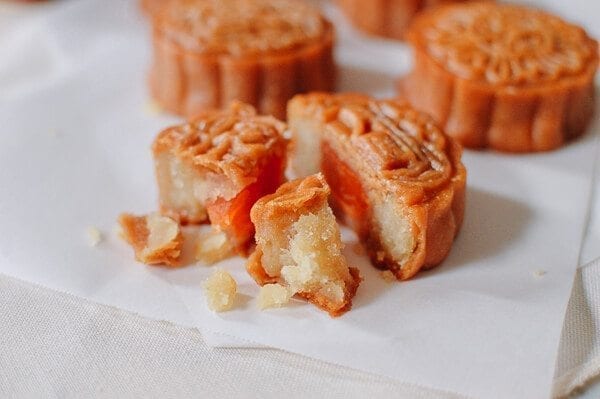
Traditional Red Bean Mooncakes
If you’re more of a fan of red bean over lotus paste, try this classic red bean mooncake, with or without salted duck egg yolks.
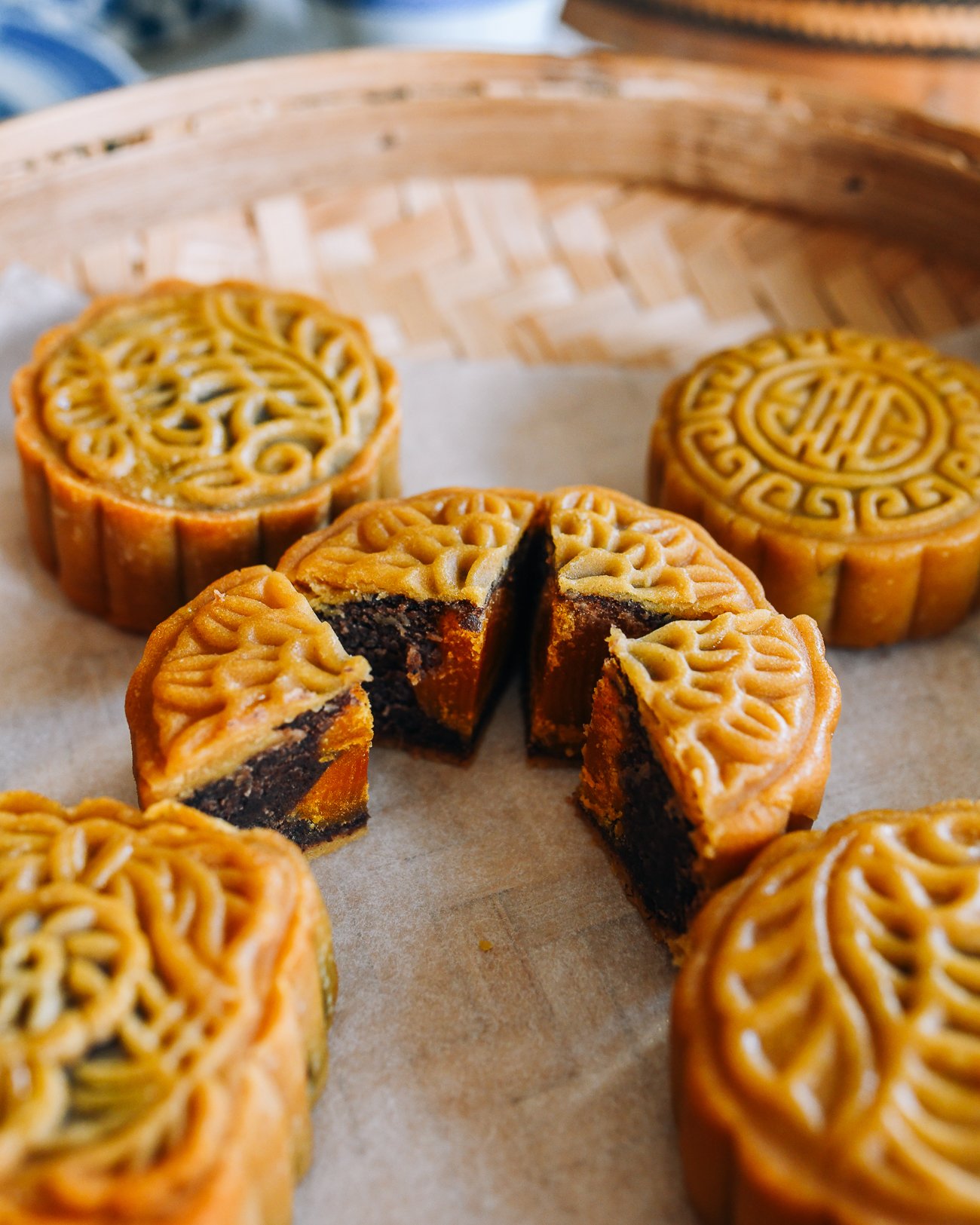
Snow Skin Mooncakes
Trendy snow skin mooncakes can’t be beat for their wow factor and ability to please a crowd. They are also gluten-free, since they don’t use wheat flour!
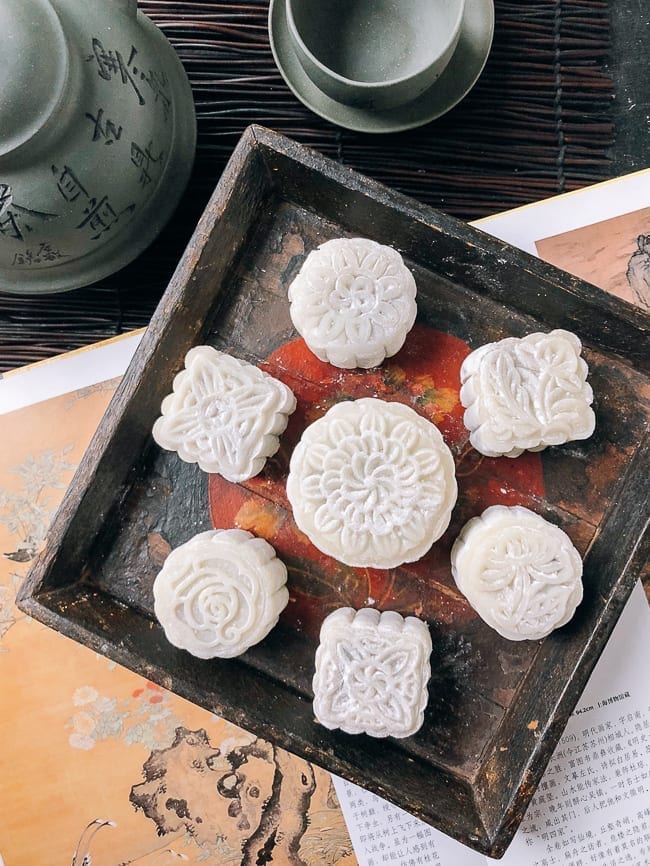
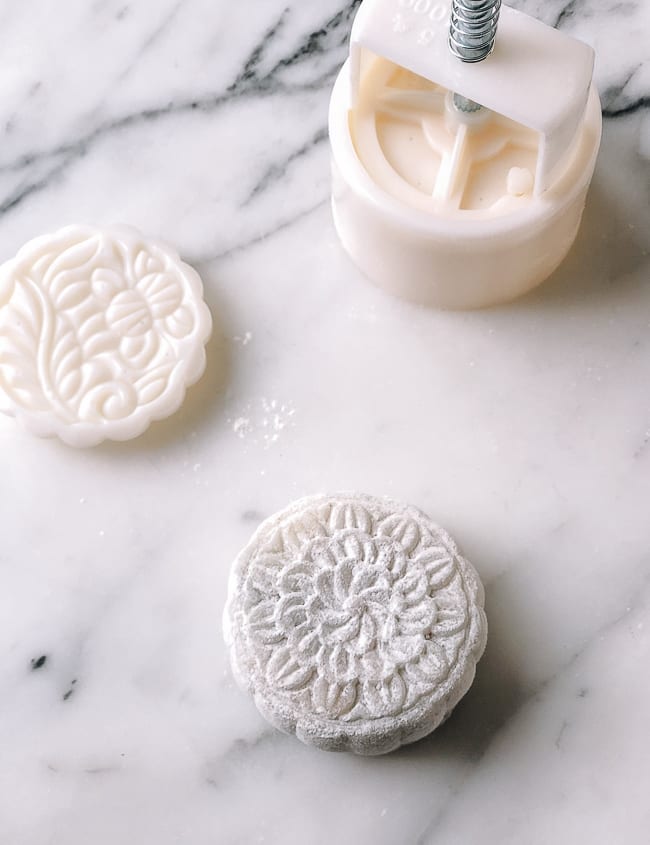
Su-Style Red Bean Mooncakes (苏式月饼)
Flaky and delicate red bean filled mooncakes with more of a flaky pastry texture, are an unexpected mooncake for your festivities.
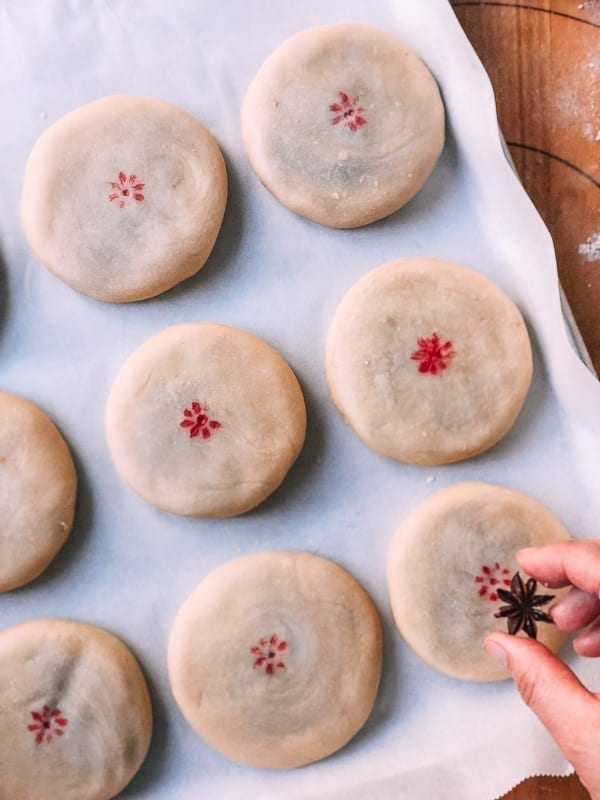
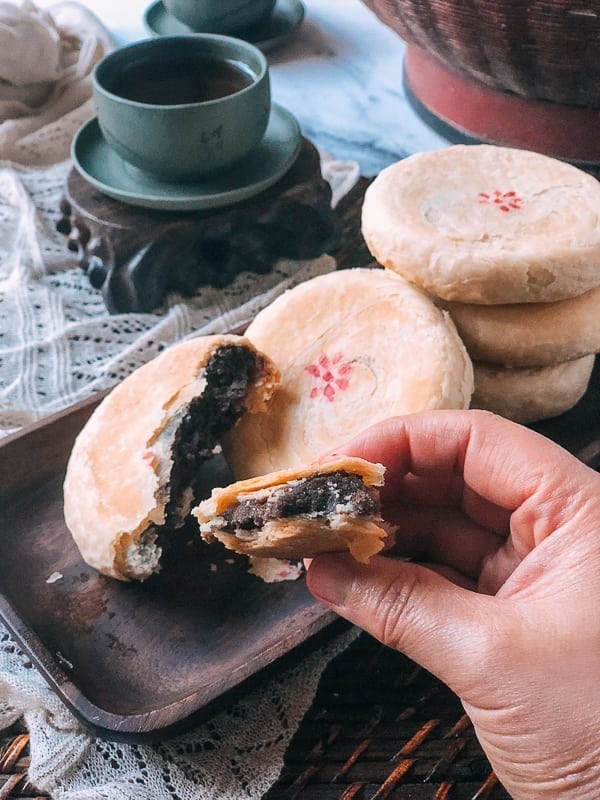
Shanghai Savory Mooncakes (Xian Rou Yue Bing)
These are a real treat. They’re incredibly delicious and perfect for those who’d rather go savory over sweet.
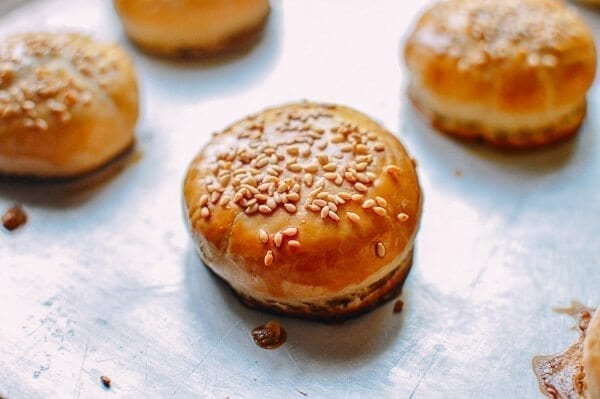
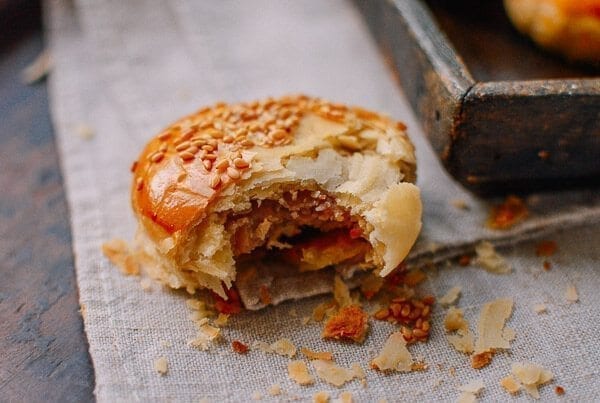
Ham and Nut Mooncake Recipe (Wu Ren Yue Bing)
These are a unique mooncake that has the best of both worlds: sweet and savory! This is Judy’s mom’s favorite mooncake.
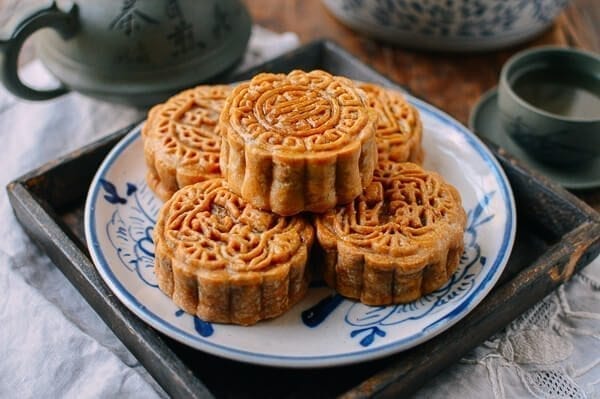
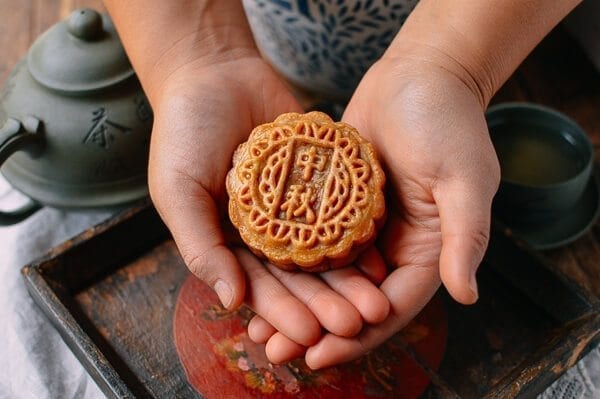
How to Make Lotus Seed Paste
Our family’s favorite is lotus seed paste!
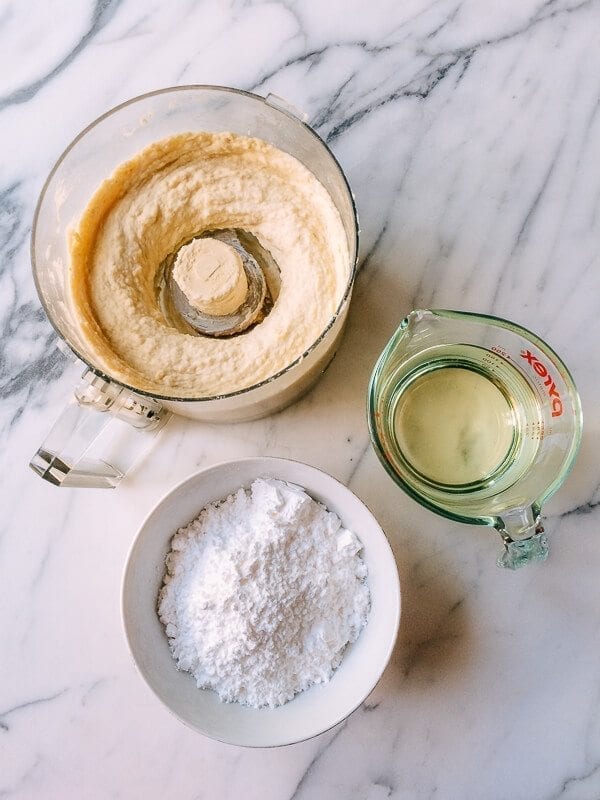
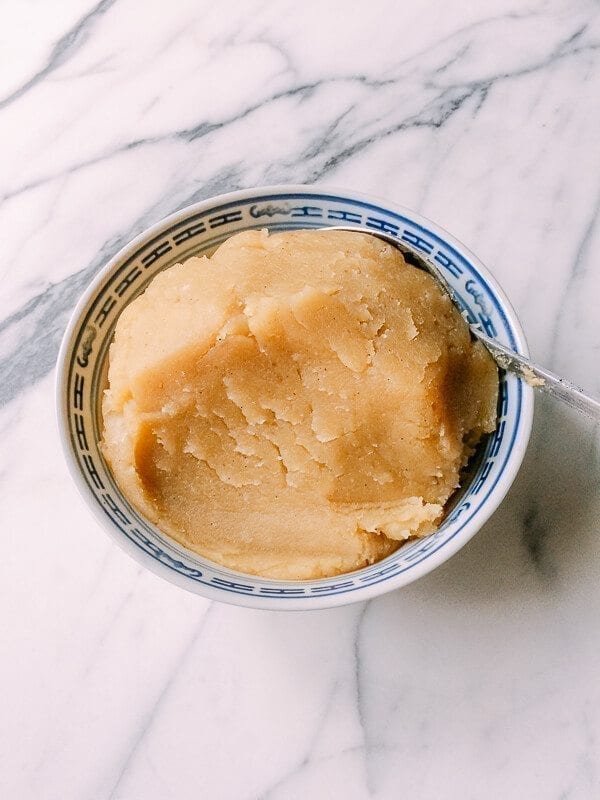
How to Make Sweet Red Bean Paste (Instant Pot)
Learn how to make your own red bean paste, where you can control the sweetness level to your liking.
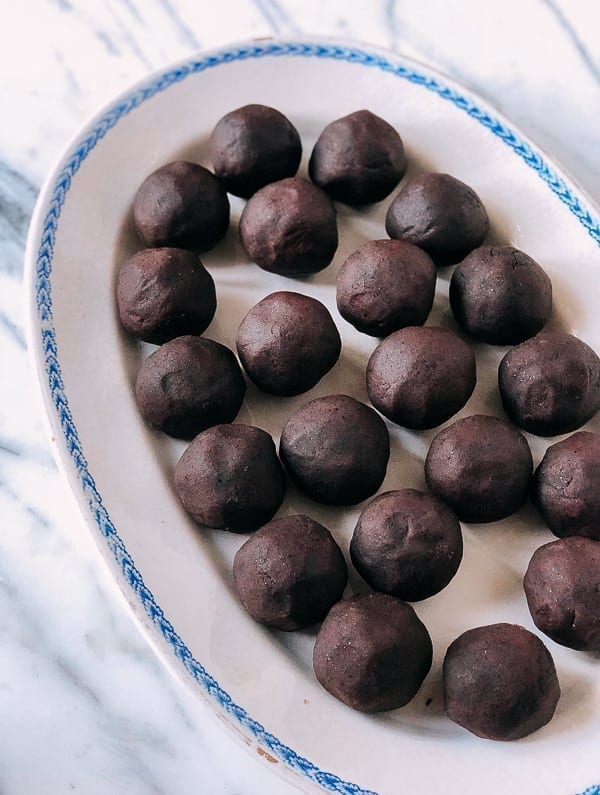
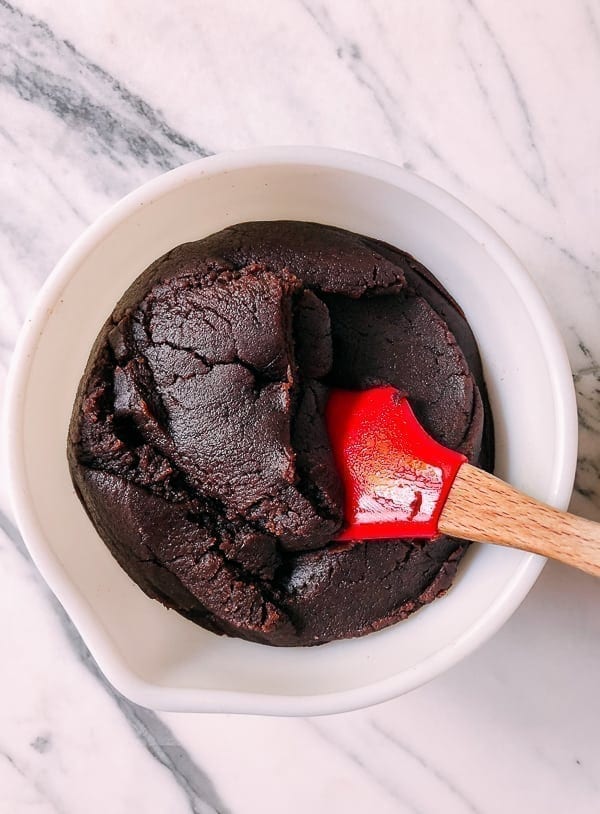
How to Make Golden Syrup
This is a vital ingredient to the golden crust of certain types of traditional mooncake. Without it, you won’t get that signature amber hue.
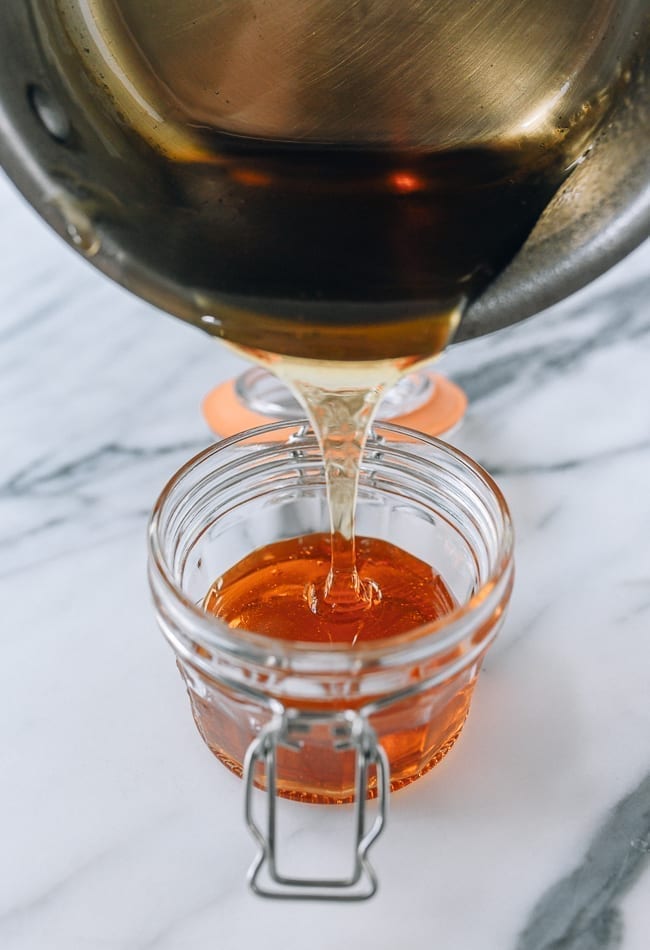
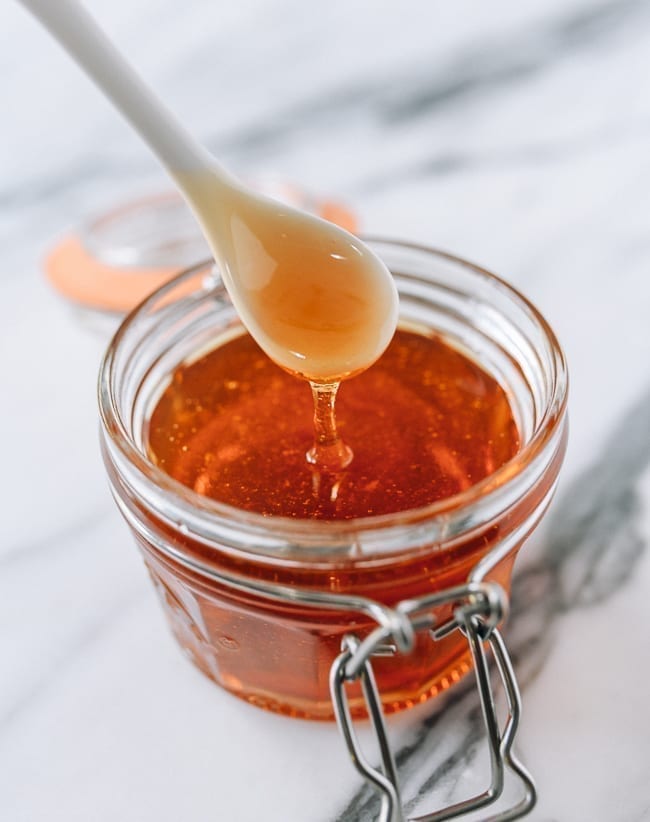
Salted Duck Eggs
Making your own salted duck eggs on TOP of making your own mooncakes is ambitious. It’s a bit too late to start for this year, but it’s never too early to start planning for next year!
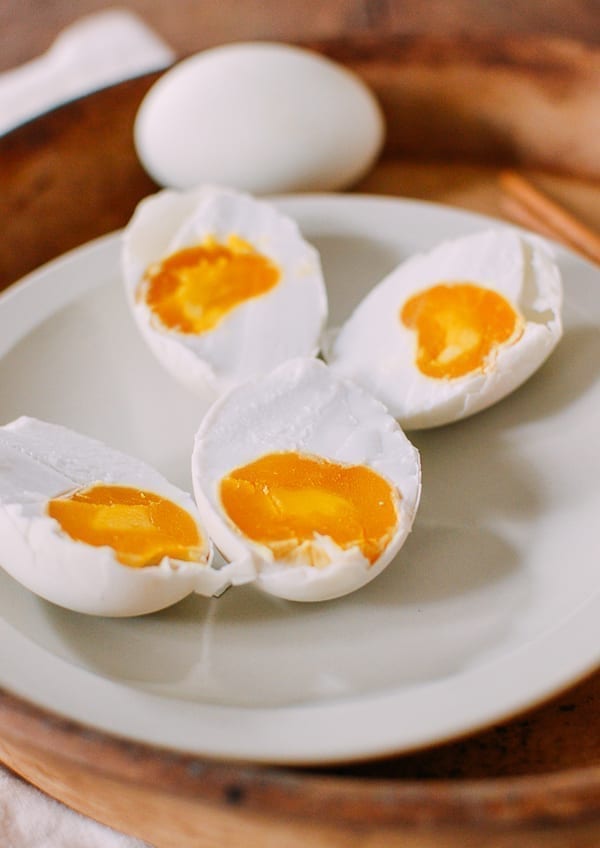
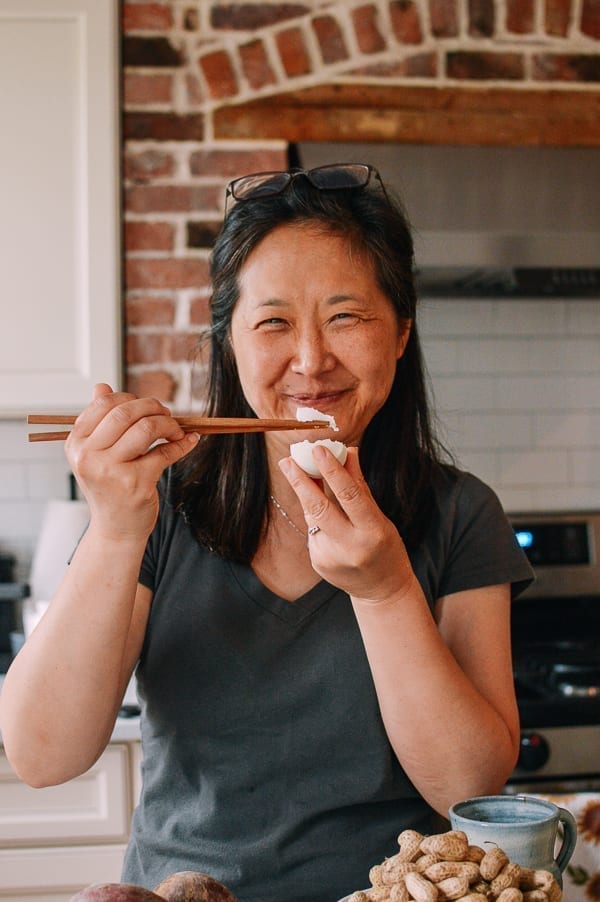
Happy Mid-Autumn Festival!
